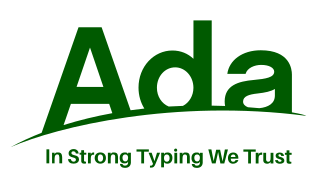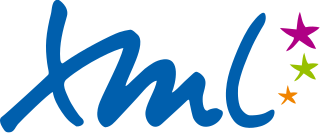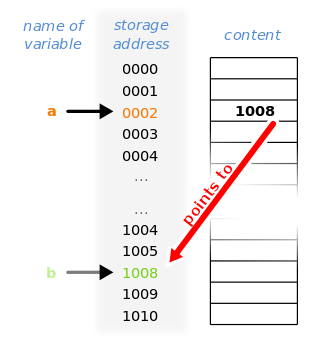PEARL, or Process and experiment automation realtime language, is a computer programming language designed for multitasking and real-time programming. Being a high-level language, it is fairly cross-platform. Since 1977, the language has undergone several standardization iterations by the Deutsches Institut für Normung. The current version is PEARL-90, which was standardized in 1998 as DIN 66253-2.
PEARL supports both fixed-point and floating-point numeric values, character and character string data as well as bit values. It also provides facilities for structures and multi-dimensional arrays. Both typed and untyped pointers are also supported, along with typecasting.
PEARL is a higher level programming language, which allows comfortable, secure and almost processor independent programming of multitasking and realtime solutions. It has been standardized since 1977 at various stages of its development. The last time was in 1998 as PEARL-90 (DIN 66253-2 1998, Berlin, Beuth-Verlag, 1998).
Besides the simple possibility to map process technical problems, an important principle in the development of PEARL was ease of learning by the programmer.
All basic data types and language structures of other procedural programming languages exist in PEARL. In addition PEARL offers comfortable language elements for the handling of multitasking- and realtime tasks.
Like most other high-level languages, PEARL supports procedures and functions, and passing parameters to these can be done by value or by reference (via pointers).
MODULE (HELLOWORLD); SYSTEM; TERMINAL:DIS<->SDVLS(2); PROBLEM; SPC TERMINAL DATION INOUT ALPHIC DIM(,) TFU MAX FORWARD CONTROL (ALL); MAIN:TASK; OPEN TERMINAL; PUT 'Hello World!' TO TERMINAL; CLOSE TERMINAL; END; MODEND; 
Ada is a structured, statically typed, imperative, and object-oriented high-level programming language, inspired by Pascal and other languages. It has built-in language support for design by contract (DbC), extremely strong typing, explicit concurrency, tasks, synchronous message passing, protected objects, and non-determinism. Ada improves code safety and maintainability by using the compiler to find errors in favor of runtime errors. Ada is an international technical standard, jointly defined by the International Organization for Standardization (ISO), and the International Electrotechnical Commission (IEC). As of May 2023, the standard, called Ada 2022 informally, is ISO/IEC 8652:2023.
C is a general-purpose computer programming language. It was created in the 1970s by Dennis Ritchie, and remains very widely used and influential. By design, C's features cleanly reflect the capabilities of the targeted CPUs. It has found lasting use in operating systems, device drivers, and protocol stacks, but its use in application software has been decreasing. C is commonly used on computer architectures that range from the largest supercomputers to the smallest microcontrollers and embedded systems.
Forth is a procedural, concatenative, stack-oriented programming language and interactive development environment designed by Charles H. "Chuck" Moore and first used by other programmers in 1970. Although not an acronym, the language's name in its early years was often spelled in all capital letters as FORTH. The FORTH-79 and FORTH-83 implementations, which were not written by Moore, became de facto standards, and an official standardization of the language was published in 1994 as ANS Forth. A wide range of Forth derivatives existed before and after ANS Forth. The free software Gforth implementation is actively maintained, as are several commercially supported systems.

Fortran is a third generation, compiled, imperative programming language that is especially suited to numeric computation and scientific computing.
PL/I is a procedural, imperative computer programming language initially developed by IBM. It is designed for scientific, engineering, business and system programming. It has been in continuous use by academic, commercial and industrial organizations since it was introduced in the 1960s.
Pascal is an imperative and procedural programming language, designed by Niklaus Wirth as a small, efficient language intended to encourage good programming practices using structured programming and data structuring. It is named after French mathematician, philosopher and physicist Blaise Pascal.

Extensible Markup Language (XML) is a markup language and file format for storing, transmitting, and reconstructing arbitrary data. It defines a set of rules for encoding documents in a format that is both human-readable and machine-readable. The World Wide Web Consortium's XML 1.0 Specification of 1998 and several other related specifications—all of them free open standards—define XML.
RT-11 is a discontinued small, low-end, single-user real-time operating system for the full line of Digital Equipment Corporation PDP-11 16-bit computers. RT-11 was first implemented in 1970. It was widely used for real-time computing systems, process control, and data acquisition across all PDP-11s. It was also used for low-cost general-use computing.

In computer science and computer programming, a data type is a collection or grouping of data values, usually specified by a set of possible values, a set of allowed operations on these values, and/or a representation of these values as machine types. A data type specification in a program constrains the possible values that an expression, such as a variable or a function call, might take. On literal data, it tells the compiler or interpreter how the programmer intends to use the data. Most programming languages support basic data types of integer numbers, floating-point numbers, characters and Booleans.
The Burroughs Large Systems Group produced a family of large 48-bit mainframes using stack machine instruction sets with dense syllables. The first machine in the family was the B5000 in 1961, which was optimized for compiling ALGOL 60 programs extremely well, using single-pass compilers. The B5000 evolved into the B5500 and the B5700. Subsequent major redesigns include the B6500/B6700 line and its successors, as well as the separate B8500 line.

The syntax of the C programming language is the set of rules governing writing of software in C. It is designed to allow for programs that are extremely terse, have a close relationship with the resulting object code, and yet provide relatively high-level data abstraction. C was the first widely successful high-level language for portable operating-system development.

In computer science, a pointer is an object in many programming languages that stores a memory address. This can be that of another value located in computer memory, or in some cases, that of memory-mapped computer hardware. A pointer references a location in memory, and obtaining the value stored at that location is known as dereferencing the pointer. As an analogy, a page number in a book's index could be considered a pointer to the corresponding page; dereferencing such a pointer would be done by flipping to the page with the given page number and reading the text found on that page. The actual format and content of a pointer variable is dependent on the underlying computer architecture.
IDL, short for Interactive Data Language, is a programming language used for data analysis. It is popular in particular areas of science, such as astronomy, atmospheric physics and medical imaging. IDL shares a common syntax with PV-Wave and originated from the same codebase, though the languages have subsequently diverged in detail. There are also free or costless implementations, such as GNU Data Language (GDL) and Fawlty Language (FL).
In computer science, type safety and type soundness are the extent to which a programming language discourages or prevents type errors. Type safety is sometimes alternatively considered to be a property of facilities of a computer language; that is, some facilities are type-safe and their usage will not result in type errors, while other facilities in the same language may be type-unsafe and a program using them may encounter type errors. The behaviors classified as type errors by a given programming language are usually those that result from attempts to perform operations on values that are not of the appropriate data type, e.g., adding a string to an integer when there's no definition on how to handle this case. This classification is partly based on opinion.

CMS-2 is an embedded systems programming language used by the United States Navy. It was an early attempt to develop a standardized high-level computer programming language intended to improve code portability and reusability. CMS-2 was developed primarily for the US Navy’s tactical data systems (NTDS).
In computer science, a call stack is a stack data structure that stores information about the active subroutines of a computer program. This type of stack is also known as an execution stack, program stack, control stack, run-time stack, or machine stack, and is often shortened to simply "the stack". Although maintenance of the call stack is important for the proper functioning of most software, the details are normally hidden and automatic in high-level programming languages. Many computer instruction sets provide special instructions for manipulating stacks.
The computer programming languages C and Pascal have similar times of origin, influences, and purposes. Both were used to design their own compilers early in their lifetimes. The original Pascal definition appeared in 1969 and a first compiler in 1970. The first version of C appeared in 1972.
A glossary of terms relating to project management and consulting.
This glossary of computer science is a list of definitions of terms and concepts used in computer science, its sub-disciplines, and related fields, including terms relevant to software, data science, and computer programming.